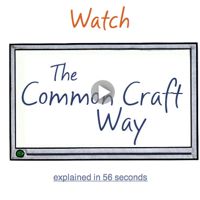Physics Department Innovates with Student-Centered Approach
At M.I.T., two introductory courses are still required — classical mechanics and electromagnetism — but today they meet in high-tech classrooms, where about 80 students sit at 13 round tables equipped with networked computers.
Instead of blackboards, the walls are covered with white boards and huge display screens. Circulating with a team of teaching assistants, the professor makes brief presentations of general principles and engages the students as they work out related concepts in small groups.
Teachers and students conduct experiments together. The room buzzes. Conferring with tablemates, calling out questions and jumping up to write formulas on the white boards are all encouraged.
“There was a long tradition that what it meant to teach was to give a really well-prepared lecture,” said Peter Dourmashkin, a senior lecturer in physics at M.I.T. and a strong proponent of the new method. “It was the students’ job to figure it out.”
The problem, say Dr. Dourmashkin and others in the department, is that a lot of students had trouble doing that. The failure rate for those lecture courses, even those taught by the most mesmerizing teachers, was typically 10 percent to 12 percent. Now, it has dropped to 4 percent.
… The traditional 50-minute lecture was geared more toward physics majors, said Eric Mazur, a physicist at Harvard who is a pioneer of the new approach, and whose work has influenced the change at M.I.T.
“The people who wanted to understand,” Professor Mazur said, “had the discipline, the urge, to sit down afterwards and say, ‘Let me figure this out.’ ” But for the majority, he said, a different approach is needed.
“Just as you can’t become a marathon runner by watching marathons on TV,” Professor Mazur said, “likewise for science, you have to go through the thought processes of doing science and not just watch your instructor do it.”
Educate for 21st-Century Skills: Fad or Necessity?

educational fad
Another shot at progressive education. The Latest Doomed Pedagogical Fad: 21st-Century Skill By Jay Mathews Washington Post January 5, 2009. He writes:
Granted, the 21st-century skills idea has important business and political advocates… It calls for students to learn to think and work creatively and collaboratively. There is nothing wrong with that. Young Plato and his classmates did the same thing in ancient Greece. But I see little guidance for classroom teachers in 21st-century skills materials. How are millions of students still struggling to acquire 19th-century skills in reading, writing and math supposed to learn this stuff?
Actually millions of students are learning to think and work creatively, it’s just not in school. They do that stuff at home on their own time. Meanwhile much of their class time is now mandated on mind-numbing test prep on those “19th-century skills.” Teachers who want to have a more engaging classroom have to sneak it into the curriculum – project-based learning has been pushed to the back of the class.
Columnist’s like Mr. Matthews have to realize that new technologies have already put students in charge of the information they access, store, analyze and share. Students are using new digital media to share their creativity with the world.
What can schools do to support learning in the digital age? Monitor the information flow and and thinking in the classroom. This changes the role of teacher from dispensing information to instructional designer. Students can’t simply give information back to their teacher. They need a chance to to create a product that asks them to communicate their thinking to a more authentic audience. Teachers will need the support and training to create supportive learning environments that considers basic questions like:
- How is information flowing through my class?
- What level of thinking skills are students being asked to use?
- How do students get to share what they’ve learned? - Who is their audience? - What is their purpose?
Image credit: flickr/boskizzi
Fostering Creativity

idea festival
Creating is Bloom’s highest level of thinking. Creating is not limited to “the creative.” We all create when we make new combinations of existing elements. Someone put wheels on the bottom of a scaled-down surfboard and created the skateboard. And so it goes…
While teachers and students are constrained by mind-numbing test prep, the rest of society is working overtime to foster creative connections. In September the annual “IdeaFestival” was held in Louisville, KY. It brings together creative thinkers from different disciplines to connect ideas in science, the arts, design, business, film, technology and education. The festival motto – “If it can possibly go together, it comes together here.” Why not apply that perspective in our schools?
Here are some suggestions from the festival on how to come up with new ideas. Many can be easily adapted to help our students discover their creative potential in the classroom.
2. Listen to classical music, go to a concert or a play or sit quietly in a park to daydream.
3. Read periodicals you would not typically read — a scientific magazine, for example, if you are more interested in business. Same with books outside your typical genre.
4. Attend a conference outside your field.
5. Surround yourself with creative thinkers.
6. Immerse yourself in a problem; ask questions, investigate possible outcomes.
7. Keep an idea journal.
8. Take a course to learn a new language or some other skill outside your expertise.
9. Be curious and experiment.
10. Articulate your idea, seek feedback, put structure on it, harvest it.
Students Can Create Videos to Teach Us “How To”
There’s an emerging genre of internet videos that fall into the category of “how to’s.” Lots of folks are offering up instructional guides for how to do everything imaginable from How to Chill a Coke in 2 Minutes to How to Fold a Towel.
Explaining “how to” requires students to research a subject, evaluate what’s important, and create a guide for someone else to follow. It gives them an opportunity to write for an authentic audience and purpose and use skills that rank very high on Bloom’s taxonomy.
If you want to get your students writing and shooting these videos here’s some suggestions:
1. Get the new Flip Ultra video camera – remarkably easy to use and only $114 at Amazon. Works with Mac or PC. I’ve been using one for a few months and I’m impressed with the sound and image quality and the simplicity of use.
2. Have students take a look at this ingenious “how to” done by Common Craft – no elaborate props or on-screen talent required. The Flip camera won’t be able to shoot as closely as the Common Craft video below, but students can easily recreate the look on a larger scale using the classroom white board and the optional Flip Ultra tripod ($14 at Amazon).
3. Post the video to TeacherTube – a safe alternative to YouTube.
OK – time to make a movie!
Note on editing. The Flip video comes with its own software that works with Mac or PC. Ingeniously, the software resides on the camera and works anytime you plug the Flip USB into a computer.� The Flip video files are created in an AVI format that can be edited on a PC using software like MovieMaker. Mac iMovie won’t accept the Flip video AVI format directly, but you can convert an AVI file to a (iMovie-friendly) m4v file format using free iSquint software. Students can design, shoot and edit the video, then do a voice over. That way they can focus on the visual message separately from the audio message.
8/08 Update: The latest version of Flip video software will allow direct import of files into Mac iMovie!



